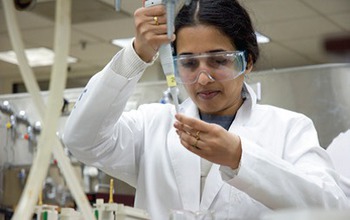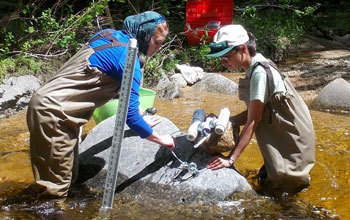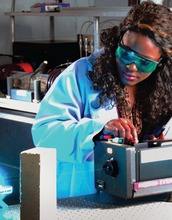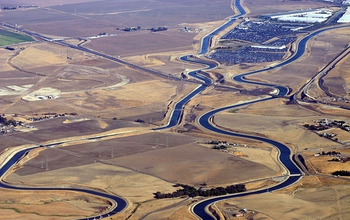All Images
Media Advisory 16-011
Community college students bring natural resource creativity to Capitol Hill
Ten teams offer innovative STEM solutions to problems at the nexus of food, energy and water
This material is available primarily for archival purposes. Telephone numbers or other contact information may be out of date; please see current contact information at media contacts.

The CCIC called on researchers from community colleges to devise STEM solutions to issues at the nexus of food, energy and water. NSF has been funding such important research for many years.
Here, a research team from Arizona State University was able to use forms of nonhazardous industrial waste materials to neutralize the acidity of soil at polluted sites, particularly abandoned mining lands. The method restored fertility to a level that allowed many of the plants, from which biofuels are derived, to grow. As a result, biofuels agriculture could become a significant contributor to soil remediation, land reclamation and natural storm water management that fertile, absorbent ground can provide.
Credit: Jessica Hochreiter, Arizona State University
Download the high-resolution JPG version of the image. (98.5 KB)
Use your mouse to right-click (Mac users may need to Ctrl-click) the link above and choose the option that will save the file or target to your computer.

A researcher engages in biotechnology at the Madison Area Technical College, WI.
Credit: Madison Area Technical College, WI

NSF has for a long time funded research aimed at improving resource management. In this NSF funded program funded through a Research Infrastructure Improvement grant, Errin Volitis, LoVoTECS network coordinator, helps volunteer scientists mount and calibrate aquatic sensors installed in over 87 rivers and streams across New Hampshire. The NH LoVo TECS Network derives from Lotic Volunteer Network with the sensors recording temperature, electrical conductivity, and stage (TECS). The network is coordinated by a group of researchers, staff and students at Plymouth State University, and implemented by a broad group of partners, including educators, researchers, government agencies, non-profit organizations and citizen scientists.
Credit: Errin Volitis, Center for the Environment, Plymouth State University
Download the high-resolution JPG version of the image. (35.1 KB)
Use your mouse to right-click (Mac users may need to Ctrl-click) the link above and choose the option that will save the file or target to your computer.

Laser-OP-TEC at the National Center for Optics and Photonics Education.
Credit: National Center for Optics and Photonics Education
Download the high-resolution PNG version of the image. (3.0 MB)
Use your mouse to right-click (Mac users may need to Ctrl-click) the link above and choose the option that will save the file or target to your computer.

Solutions for better water distribution systems to alleviate the negative effects of drought are needed--especially in California. California has a complex water distribution system: here, the California Aqueduct in dry farmland. Note the wind turbines in the lower left corner.
Credit: Ian Kluft, CC BY-SA 3.0
Download the high-resolution JPG version of the image. (3.0 MB)
Use your mouse to right-click (Mac users may need to Ctrl-click) the link above and choose the option that will save the file or target to your computer.


